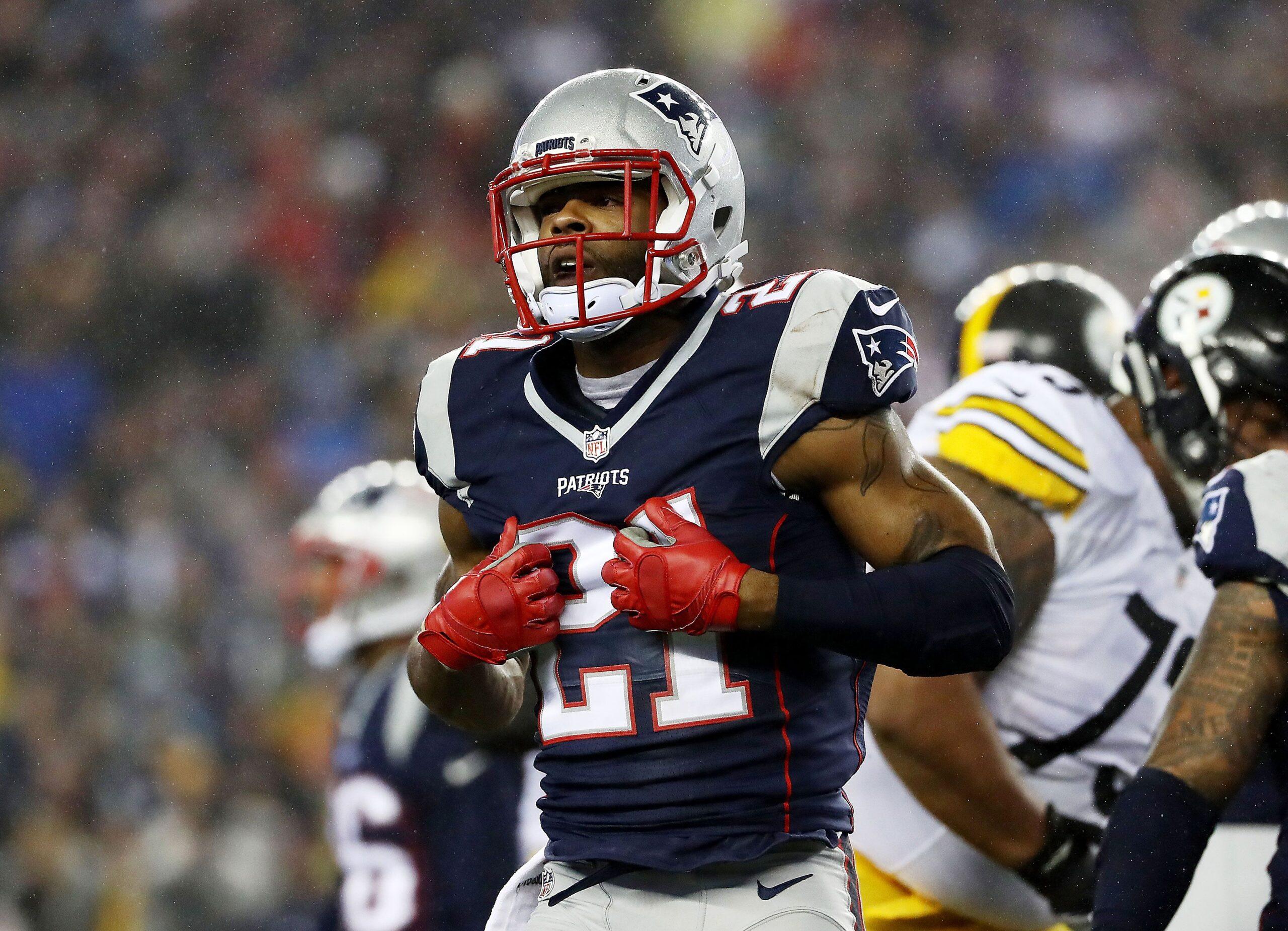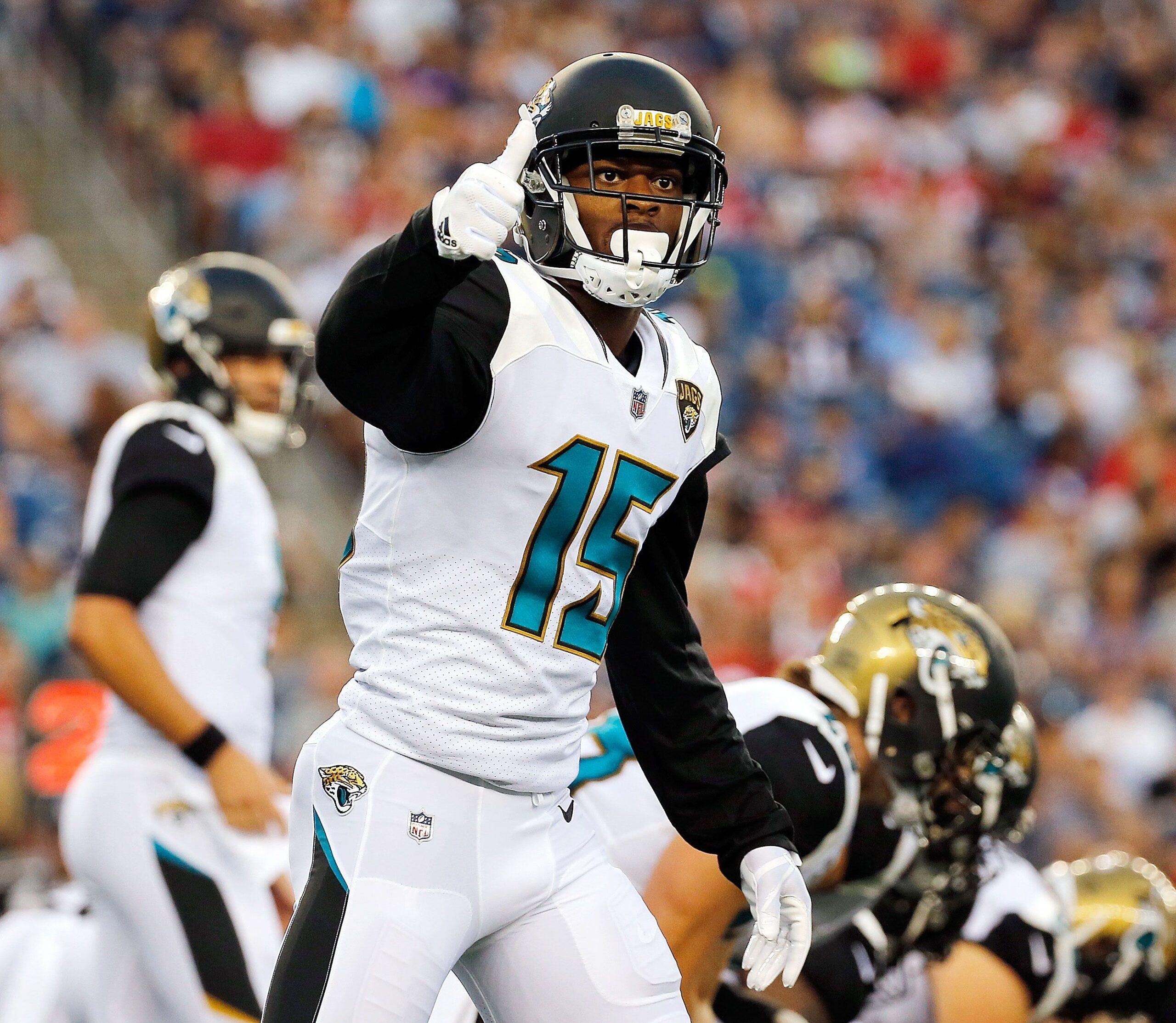
This week the NFL informed teams that the 2018 salary cap had settled at $177.2 million. The jump up from $167 million last season represents the fifth straight year-to-year increase of at least $10 million. In this era of an ever-rising cap, when teams have the ability to roll over unused cap dollars from season to season, the franchises that haven’t doled out a collection of long-term contracts have been able to assemble massive reservoirs of cash.
As such, five teams are set to have at least $64 million in cap space after the roster cuts that will take place at the beginning of the 2018 league year on March 15: the Jets, Browns, Colts, Bucs, and Bears. It’s no surprise that all five of those teams also have top-eight picks in this spring’s draft.
Given all of the money this group has at its disposal, I thought it’d be useful to present the ideal hauls for each of these teams during free agency, both in regard to possible players added and the contracts they could sign. The breakdowns below aren’t necessarily predictions (although I consider many included players to be decent fits based on the tendencies of each team’s decision-makers), and they don’t constitute entire free-agent classes. They just point to potential targets that these five teams could home in on.
All cap figures come from Spotrac, which has incorporated reported cuts into its figures. With that out of the way, let’s go shopping.
New York Jets
Estimated Cap Space: $90.6 million
Ideal Haul:
- Kirk Cousins, QB (three years, $98 million, $80 million guaranteed)
- Tyler Eifert, TE (three years, $22 million, $11 million guaranteed)
- E.J. Gaines, CB (four years, $37 million, $20 million guaranteed)
- Ryan Jensen, C (three years, $15.6 million, $8 million guaranteed)
In this fantasy world, the Jets successfully lure their franchise-saving hero of choice. Gang Green is reportedly one of the final four teams in the running to sign Cousins, and with rumors swirling that the Vikings are willing to shill out a fully guaranteed deal worth more than $30 million per season, the Jets will have to swing big to snag him. The infrastructure in New York isn’t nearly as cushy as the situation that Cousins could enter in Minnesota, but he’d still have a handful of enticing targets at his disposal. Robby Anderson is an effective vertical option, and Anderson, Quincy Enunwa, and Jermaine Kearse form a solid trio of wideouts.
What the Jets’ passing game lacks is a proven middle-of-the-field receiving threat who’s able to move the chains and attack defenses in the red zone. That’s where Eifert would come in. The tight end’s ability to stay healthy is undeniably a concern, but when he’s right the 27-year-old is among the best pass catchers at his position. Eifert could fill a role similar to Jordan Reed’s for Cousins in Washington. There is also a chance that Eifert’s injury history will drive down his price, particularly in terms of guaranteed money. If the Jets can bring in Eifert on an incentive-laden deal, it could help mitigate the franchise’s risk.
Signing both the oft-injured Eifert and the similarly snakebit Gaines may amount to playing with fire, but as is the case with Eifert, the allure of Gaines when healthy will convince some team to roll the dice. Treated as an afterthought in the Rams’ 2017 trade for Sammy Watkins, the cornerback is coming off a campaign in which he contributed to a surprisingly stingy pass defense in Buffalo. He became expendable when the Bills signed Vontae Davis last week. The Jets are desperately hurting for cornerback help, and Gaines would provide them with a cheaper alternative to top-of-the-market options such as Malcolm Butler and Trumaine Johnson.
If the Jets are able to pull in the prize of free agency, a former Pro Bowl tight end, and a stifling cornerback, most fans might have a hard time getting excited about a center with 25 career starts. Allow me to change that. Jensen was in the middle of the Ravens’ offensive line last season; after spending two seasons as a reserve guard, he started all 16 games at center. In his first year at the position, he emerged as a reliable presence for Baltimore, which couldn’t rely on much up front. Based on recent deals for centers J.C. Tretter and Daniel Kilgore, Jensen could probably be had for about $5 million a year. He could also serve as a source of comfort for Jets fans who are used to their centers having glorious manes.
Cleveland Browns
Estimated Cap Space: $97 million
Ideal Haul:
- A.J. McCarron, QB (three years, $48 million, $20 million guaranteed)
- Jarvis Landry, WR (four years, $54 million, $28 million guaranteed)
- Trumaine Johnson, CB (four years, $50 million, $24 million guaranteed)
- Eric Reid, S (four years, $31 million, $16 million guaranteed)
OK, I’ll admit I took some liberties with this one. That starts with Landry, who isn’t even a free agent at the moment. The Dolphins brass recently stuck him with the franchise tag but has reportedly given the receiver’s camp the opportunity to seek a trade. Of teams with available resources, Cleveland is best situated to make a play.
The Browns own an absurd six of the top 65 picks in this year’s draft. Most front offices would be unwise to give up significant draft capital for a chance to hand Landry a huge payday. Yet for a franchise loaded with cap space and picks, a trade could make sense, especially given Cleveland’s history of failing to attract big-name free agents (who aren’t offensive linemen).
Landry would also fill a glaring hole for the Browns. With Josh Gordon and Corey Coleman working on the outside, the team’s 2018 quarterback will need a slot option to attack the middle of the field. I’m on record as saying that Landry isn’t worthy of becoming the league’s eighth- or ninth-most-expensive receiver, but no franchise could absorb that cap hit quite like Cleveland. If Landry is available for the Browns’ third-round pick and is open to signing long term, a move is worth considering.
A bigger question than who could shore up Cleveland’s receiving corps is who can provide stability under center. Word is that head coach Hue Jackson still has eyes for McCarron, whom the Browns tried to swing a deal for at last year’s trade deadline. Even if Cleveland plans to select a quarterback first overall, the brass could seek a veteran option at the helm to ease the rookie’s transition. The Browns could follow Chicago’s blueprint from last season (which still gives me night terrors, as a Bears fan), making McCarron their version of Mike Glennon to pair with a prospect.
If Cleveland’s top priority over the next few weeks is finding its quarterback of the future, securing adequate help in the secondary isn’t far behind. The Browns finished 28th in Football Outsiders’ pass defense DVOA against no. 1 receivers last season. Johnson has been repeatedly linked to the team based on his history with coordinator Gregg Williams and the defense’s need for a top-tier corner on the outside. I’d hesitate about giving him a deal that pays about $12.5 million per season, which is only slightly less than what A.J. Bouye and Stephon Gilmore fetched last March, but for Cleveland this signing could make sense, particularly if the team also inks a safety to shore up a unit that ranked dead last in pass defense DVOA against tight ends. Reid was a first-round pick who won’t turn 27 until December. He could land a similar deal to the one Tony Jefferson got in Baltimore.
Indianapolis Colts
Estimated Cap Space: $65.6 million
Ideal Haul:
- Andrew Norwell, G (five years, $58 million, $28 milion guaranteed)
- Malcolm Butler, CB (four years, $42 million, $22 million guaranteed)
- Nigel Bradham, LB (three years, $19.5 million, $12 guaranteed)
- Nickell Robey-Coleman, CB (three years, $13 million, $5 million guaranteed)
Norwell is my favorite available player in free agency. The former undrafted free agent blossomed into a star during his tenure in Carolina and would instantly infuse talent and nastiness into the interior of a Colts front that’s been lacking both qualities in recent years. Indianapolis would love to get more from center Ryan Kelly after drafting him in the 2016 first round, and bringing in a rock like Norwell could help solidify the left side of its offensive line. That could prove crucial for a group looking to protect a healthy Andrew Luck again come fall.

The Colts’ line woes have been a talking point since Luck was drafted, but this offseason’s more pressing need may be the secondary. Quincy Wilson, a 2017 second-round pick, is the only starter remaining at his position, leaving two corner spots for the team to fill. Enter Butler and Robey-Coleman, who’d be ideal targets.
Butler may represent the biggest enigma in this free-agent class: He could command a deal in the range just below the Bouye and Gilmore tier, but he could also face a rude financial awakening. It depends on whether teams are willing to look past his uneven 2017 season. The Colts need a top-tier cover man, though, and, at his best in New England, Butler was a sticky corner who could play inside and outside. Robey-Coleman, meanwhile, played well in his sole season with the Rams. Slot corners are relatively affordable on the open market, and he seems to be a logical fit.
Rounding out the ideal Colts haul is former Eagles linebacker Nigel Bradham. Indy has needs at receiver and running back, and it’s fun to imagine players like Dion Lewis and Sammy Watkins joining forces with a healthy Luck. But I get the sense that general manager Chris Ballard wants to build this roster through the middle. His biggest swing during 2017 free agency was defensive tackle Johnathan Hankins, and he nabbed free safety Malik Hooker with the first draft pick of his regime. Linebacker has long been a wasteland for the Colts. The 28-year-old Bradham is a useful player who would provide an immediate upgrade at a spot that the Colts ignored for too long under former GM Ryan Grigson.
Tampa Bay Buccaneers
Estimated Cap Space: $72.6 million
The Haul:
- Adrian Clayborn, DE (three years, $23 million, $15 million guaranteed)
- Josh Sitton, G (three years, $19 million, $10 million guaranteed)
- Tre Boston, S (four years, $27 million, $16 million guaranteed)
- Aaron Colvin, CB (three years, $17 million, $10 million guaranteed)
Pass-rushing help tops the Bucs’ offseason priority list for what feels like the 126th consecutive year, and Clayborn would be a fun addition. A first-round pick by the franchise in 2011, he was haunted by injuries during his four seasons in Tampa Bay, never living up to his lofty billing. Yet Clayborn enjoyed a career season for the Falcons in 2017, racking up 9.5 sacks and generating consistent pressure. He can impact games from both the inside and outside, and could team up with Gerald McCoy, Robert Ayers, and Noah Spence to lend some flexibility to Tampa Bay’s front.
Along with adding to their collection of big guys on defense, the Bucs enter this year’s market hoping to bolster their offensive line. That’s where Sitton would be a fit. One of GM Jason Licht’s first moves upon coming to Tampa Bay in 2014 was trading for stalwart Patriots guard Logan Mankins. Sitton could offer a similar stabilizing presence. After Mankins retired, the Bucs have gone a few different directions on the interior of the line; they have struggled to find answers. Sitton is a proven commodity, a four-time Pro Bowler, and a guy who helped anchor the Packers line for years and instantly improved the Bears’ unit when he arrived in 2016. At 31 years old, he could be available at a relative discount, and as a bonus he’s a Florida native: He went to high school in Pensacola and spent his college days at Central Florida, less than two hours from Tampa Bay.
The other two players in this haul would represent young building blocks upon which the secondary could take shape. Boston and Colvin are not the biggest names on the market, but both were quietly effective in 2017. Boston was excellent in his lone season with the Chargers. Maybe it’s a red flag that the Panthers were willing to waive him just 10 months ago, but he’d nonetheless be a significant upgrade from the safeties that Tampa Bay has trotted out in recent years. Colvin was the odd man out in Jacksonville after the Jaguars’ recent spending spree. He may not be the star that his former teammates are, but he’s a reliable inside corner who would fill a need.
Chicago Bears
Estimated Cap Space: $64.6 million
Ideal Haul:
- Allen Robinson, WR (four years, $48 million, $26 million guaranteed)
- Kyle Fuller, CB (three years, $30 million, $18 million guaranteed)
- Alex Okafor, DE (two years, $6.4 million, $3 million guaranteed)
- Patrick Robinson, CB (three years, $12.2 million, $6 million guaranteed)

A fitting title for Chicago’s 2018 offseason would be The Purge: Bear Down. By the time the combine ended, the Bears had already cut ties with Sitton, Glennon, linebacker Jerrell Freeman, safety Quintin Demps, and pass rushers Pernell McPhee and Willie Young. Receiver Markus Wheaton and cornerback Marcus Cooper are also on the chopping block if the Bears can snag worthwhile replacements next week. All of these moves have given GM Ryan Pace a comically large pile of money with which to work.
The collection of signings listed above would be my personal pipe dream. I’ve long thought Allen Robinson is among the most talented receivers in the NFL, and Jacksonville’s decision to let him test the market could be the Bears’ gain. Chicago’s receiving corps was one of the league’s worst position groups last fall. Signing Robinson as the no. 1 option, tendering restricted free agent Cameron Meredith as a second-round pick, and bringing in a cheaper slot option either through the draft or free agency would allow Pace to remake his pass-catching arsenal in a single offseason. Kevin White, the team’s 2015 first-round pick, remains a wild card, but at this point it’s hard to consider him part of the long-term plan. Robinson is sure to attract lots of suitors, and the appeal of pairing with Jimmy Garoppolo on the 49ers might prove too much to turn down. But c’mon, give me this one. Please.
On defense, Chicago’s top priority should be retaining Fuller. That’s a marked turnaround from the cornerback’s standing at the start of last fall, as the front office declined to pick up his fifth-year option after he missed all of the 2016 campaign with a knee injury. Fuller responded by turning in a magnificent 2017, particularly down the stretch. On Tuesday, Chicago hit him with transition tag, allowing it to match any deal and sign Fuller to an extension past the July 15 deadline. The NFL Network’s Ian Rapoport indicated that a long-term deal is the Bears’ goal here, and it should be. Based on the way Fuller played last season, the 26-year-old deserves a contract in the range of the one Logan Ryan received from the Titans in 2017.
Beyond keeping Fuller, the Bears still need help at corner with both Prince Amukamara and Bryce Callahan hitting free agency. Patrick Robinson, who was a revelation for the Eagles last season after signing a one-year deal, would be an excellent addition. Robinson will be 31 in September, and it’s possible that the journeyman will take less money to return to the defending Super Bowl champions. The Bears are in need of a slot corner, though, and he’s worth inquiring about.
Chicago also needs some pass-rushing additions to help whomever it lands in the secondary. The defense’s edge-rushing talent has been depleted over the past two years; it lacks a single proven player outside of 2016 first-round pick Leonard Floyd. Okafor would represent a risk as he rehabs from an Achilles injury, but he could be available for a bargain price.
Coming off a 5-11 season, the Bears have many areas of need. That’s why it would make sense for Pace to supplement a couple of big swings with a few modest signings. Inside linebacker and guard are two spots that come to mind. There are mid-tier players (Jack Mewhort, Josh Kline, and Avery Williamson, among others) at both positions who could make sense.